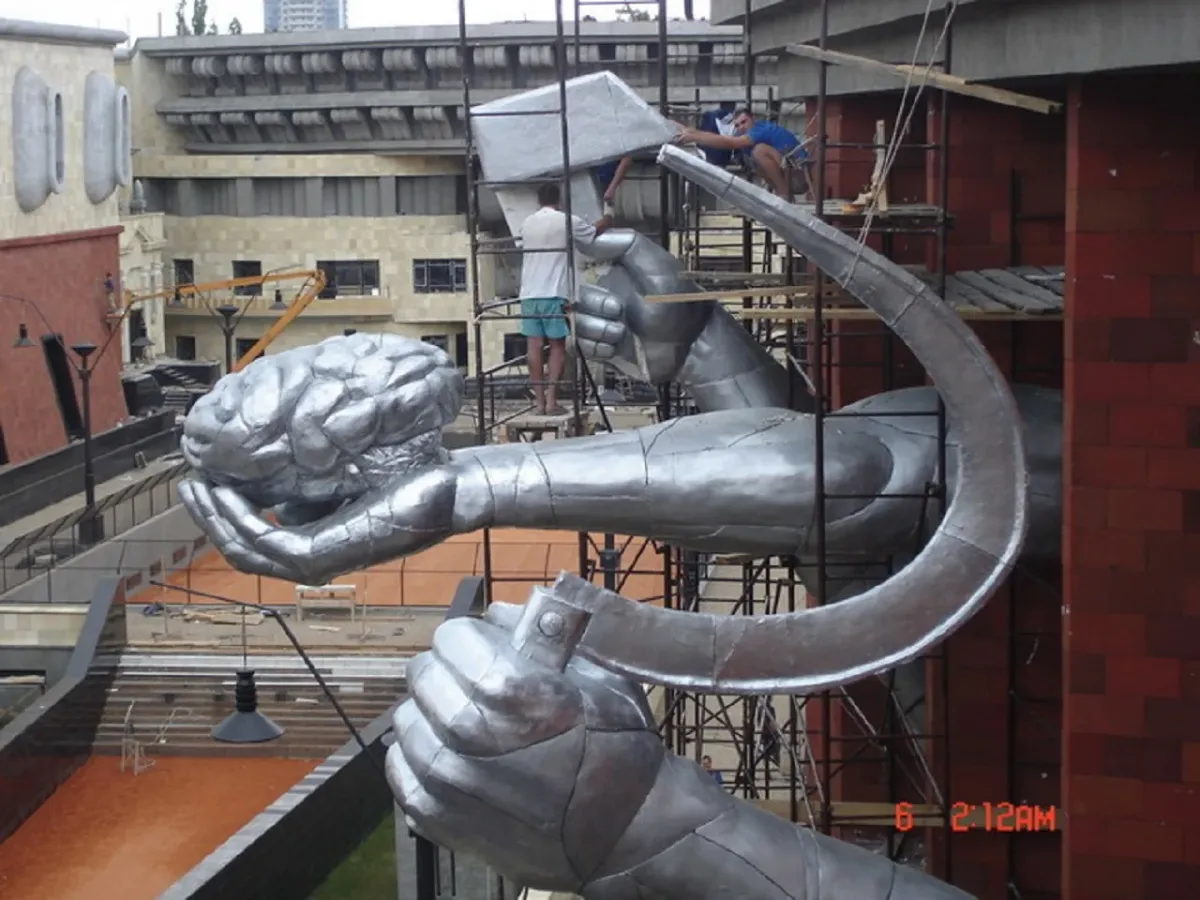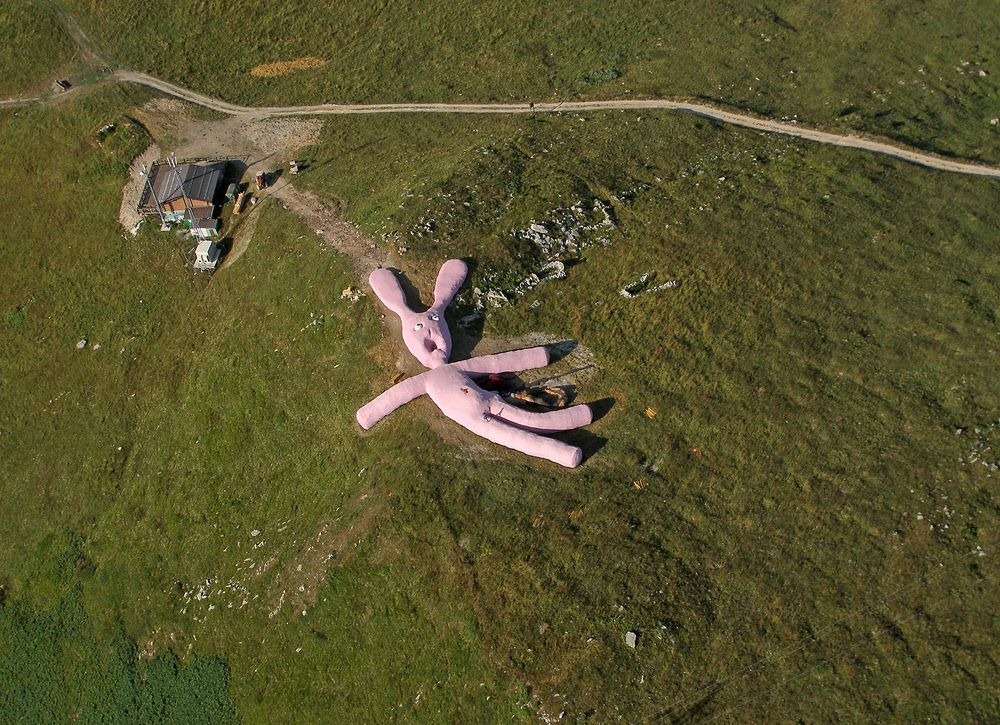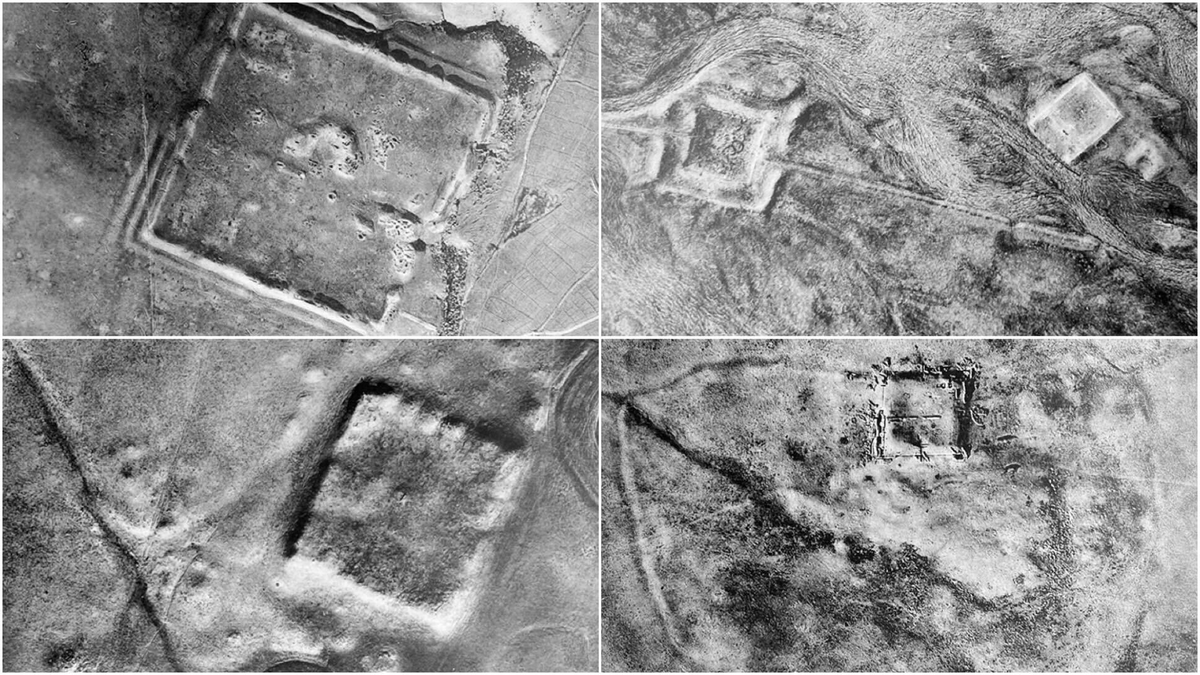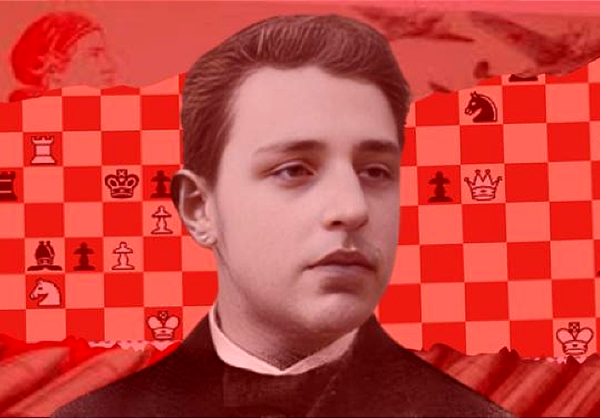How a movie set turned into a totalitarian prison camp

From Michael Idov for GQ in 2011: "The rumors started seeping out of Ukraine: A young Russian film director had holed up on the outskirts of Kharkov, a town of 1.4 million in the country's east, making...something. If the gossip was to be believed, this was the most expansive, complicated, all-consuming film project ever attempted. A steady stream of former extras and fired PAs talked of the shoot in terms usually reserved for survivalist camps. The director, Ilya Khrzhanovsky, orced the crew to dress in Stalin-era clothes, fed them Soviet food out of cans and tins, and paid them in Soviet money. Khrzhanovsky had taken over all of Kharkov, they said, shutting down the airport. Others insisted, the entire thing was a prison experiment, filmed by hidden cameras."
When a giant pink bunny appeared on a hill in the Italian countryside

From Dan Lewis at Now I Know: "The Italian village of Frabosa Sottana is located in the northwestern part of the country, in the foothills of the Alps. It’s a small, nondescript municipality, home to only about 1,500 people. And one day, the residents woke up to find a giant pink rabbit lying on the hill of the local ski resort. This was no child's toy – it was 200 feet long and about 20 feet high. It turned out that the rabbit was put there by a Vienna-based art collective, which does all sorts of weird things like this; in 2014, they built a giant nose in an open space in Germany. The rabbit was knitted from wool and stuffed with hay, and was designed to make a statement about decay – and it did, since it rotted away and was almost completely gone by about 2016."
Alaska grapples with a legacy of Russian brutality against indigenous peoples

From Casey Michel at Politico: "In the summer of 2020, local leaders in a small American town gathered for a contentious vote on whether to take down a statue that honored a historical figure. This statue, though, had nothing to do with the Confederacy or the Civil War. It stood in the small coastal town of Sitka, located on an island about halfway between Anchorage and Vancouver. The statue was of a Russian, a merchant by the name of Aleksandr Baranov, a key figure in Russia’s conquest of Alaska over 200 years ago. A town resolution said Baranov, who was Alaska’s first colonial governor, directly oversaw the enslavement of Tlingit and Aleut people, along with murder and theft."
Editor's note: If you like this newsletter, I'd be honoured if you would help me by contributing whatever you can via my Patreon. Thanks!
To live in this New York community, you have to prove you can contact the dead

From Anna Kodé at the New York Times: "Everybody dies. But not in Lily Dale. Founded in 1879, the hamlet of about 250 residents in rural western New York is a haven for Spiritualism, a religion formed around the conviction that human souls continue living after physical death. But in the physical world, the one we’re in here and now, tension is brewing among the living about who is authorized to contact the dead. Three women are suing the Lily Dale Assembly, the nonprofit organization that runs the community and owns all the land. To become Lily Dale-registered mediums, candidates must go through a testing process and their score is determined by how frequently they were able to display that they successfully engaged with the spirit world."
Cold war satellite images reveal hundreds of unknown Roman forts

From Caroline Davies for The Guardian: "Declassified cold-war spy satellite images have thrown new light on the workings of the Roman empire by revealing hundreds of previously undiscovered forts, with dramatic implications for our understanding, experts have said. Archaeologists examining aerial photographs taken in the 1960s and 70s said they reveal 396 sites of unknown Roman forts in Syria and Iraq across the Syrian steppe. The findings, published today in Antiquity, an international archeology academic journal, have now forced a re-evaluation of life at the Roman frontier."
False fang: When the CIA staged a vampire attack in the Philippines

From Jake Rossen for Mental Floss: "The insurgents gathered around the body. On the ground lay one of their men, dead and ghostly white. They expected to find bullet wounds. Instead, closer inspection revealed he had two small puncture marks in his neck. In the night, something had taken him, sunk its pointed teeth in, and drained him of every ounce of his blood. Their thoughts turned to the aswang, a vampire-like entity that had persisted in folklore for centuries. The truth was far more pragmatic, but no less horrifying. It was the early 1950s in the Philippines, and insurgents known as the Hukbalahap were a presence for both local government and U.S. intelligence. To combat them, the CIA would utilize a new frontier in psychological warfare: bloodsuckers."
When a mountain casts a shadow in the sky
All objects, big or small, cast shadows and so do mountains.
— Massimo (@Rainmaker1973) November 1, 2023
However, one particular peak displays a peculiar behavior – it casts shadows not only on the ground, but also up in the clouds.
This photo of Mt Rainier was captured by Lisa Bishop. pic.twitter.com/b7YvOpEnsk



